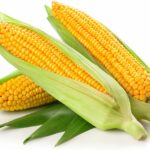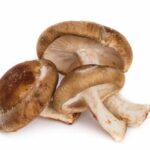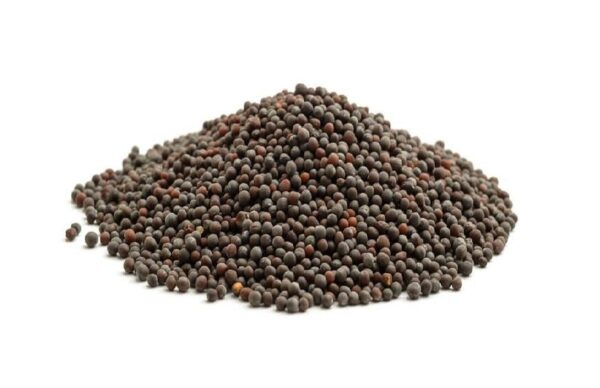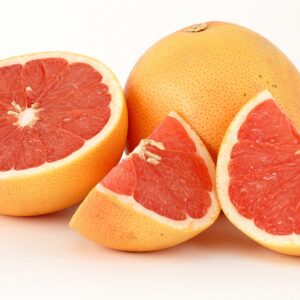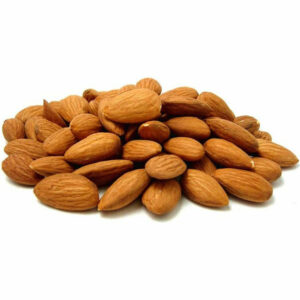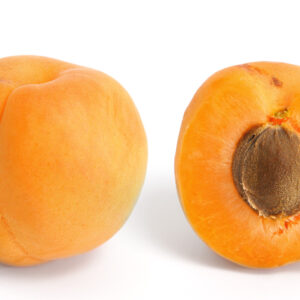Description
2.00 tsp
(4.00 grams)
GI: very low
This chart graphically details the %DV that a serving of Mustard seeds provides for each of the nutrients of which it is a good, very good, or excellent source according to our Food Rating System. Additional information about the amount of these nutrients provided by Mustard seeds can be found in the Food Rating System Chart. A link that takes you to the In-Depth Nutritional Profile for Mustard seeds, featuring information over 80 nutrients, can be found under the Food Rating System Chart.
- Health Benefits
- Description
- History
- How to Select and Store
- Tips for Preparing and Cooking
- How to Enjoy
- Nutritional Profile
- References
Health Benefits
The unique healing properties of mustard seeds can partly be attributed to their home among the Brassica foods found in the cruciferous plant family.
Phytonutrient Compounds Protective Against Gastrointestinal Cancer
Like other Brassicas, mustard seeds contain plentiful amounts of phytonutrients called glucosinolates. The seeds also contain myrosinase enzymes that can break apart the glucosinolates into other phytonutrients called isothiocyanates. The isothiocyanates in mustard seed (and other Brassicas) have been repeatedly studied for their anti-cancer effects. In animal studies—and particularly in studies involving the gastrointestinal tract and colorectal cancer—intake of isothiocyanates has been shown to inhibit growth of existing cancer cells and to be protective against the formation of such cells.
Anti-Inflammatory Effects from Selenium and Magnesium
Mustard seeds emerged from our food ranking system as an excellent source of selenium, a nutrient which that has been shown to help reduce the severity of asthma, decrease some of the symptoms of rheumatoid arthritis, and help prevent cancer. They also qualified as a good source of magnesium. Like selenium, magnesium has been shown to help reduce the severity of asthma, to lower high blood pressure, to restore normal sleep patterns in women having difficulty with the symptoms of menopause, to reduce the frequency of migraine attacks, and to prevent heart attack in patients suffering from atherosclerosis or diabetic heart disease.
Mustard seeds also qualified as a very good source of omega-3 fatty acids and manganese as well as a good source of phosphorus, copper, and vitamin B1.
Description
If you are like most people, the word “mustard” probably conjures up images of ballparks and barbeques. Yet, once you add mustard seeds to your spice cabinet, the word will take on a whole new meaning, as you will also relish the spicy, aromatic rustic taste and fragrance that mustard can add to your meals.
Mustard seeds are from the mustard plant, which is a cruciferous vegetable related to broccoli, Brussels sprouts and cabbage. While there are approximately forty different varieties of mustard plants, there are three principal types used to make mustard seeds: black mustard (Brassica nigra), white mustard (Brassica alba) and brown mustard (Brassica juncea). Black mustard seeds have the most pungent taste, while white mustard seeds, which are actually yellow in color, are the most mild and are the ones used to make American yellow mustard. Brown mustard, which is actually dark yellow in color, has a pungent acrid taste and is the type used to make Dijon mustard.
Mustard seeds are sold either whole or as a ground powder.
History
Mustard seeds can be traced to different areas of Europe and Asia with the white variety originating in the eastern Mediterranean regions, the brown from the foothills of the Himalayan Mountains, and the black from the Middle East. Mustard seeds are mentioned in ancient Sanskrit writings dating back about 5,000 years ago. They are also mentioned in the New Testament in which the kingdom of Heaven is compared to a grain of mustard seed.
While mustard seeds were used for their culinary properties in ancient Greece, it seems that it was the ancient Romans who invented a paste from the ground seeds, which was probably the ancestor of our modern day mustard condiment. The physicians of both civilizations, including the father of medicine Hippocrates, used mustard seed medicinally.
Mustard seed is one of the most popular spices traded in the world today. As it grows well in temperate climates, the areas that produce the greatest amount of mustard seeds currently include Hungary, Great Britain, India, Canada and the United States.
How to Select and Store
Even through dried herbs and spices are widely available in supermarkets, explore the local spice stores in your area. Oftentimes, these stores feature an expansive selection of dried herbs and spices that are of superior quality and freshness compared to those offered in regular markets. Just like with other dried spices, try to select organically grown mustard seeds or powder since this will give you more assurance that the herbs have not been irradiated.
Mustard powder and mustard seeds should be kept in a tightly sealed container in a cool, dark and dry place. Prepared mustard and mustard oil should both be refrigerated.
Tips for Preparing and Cooking
Tips for Preparing Mustard Seeds
- Mustard seeds or mustard powder can be used as a condiment in a variety of dishes. Mustard seeds can be used as is or can be roasted in a skillet.
- While dried mustard powder does not have a very strong quality, mixing it with water initiates an enzymatic process that enhances its pungency and heat. To moderate its sharp flavor, you can either add some very hot water or an acidic substance such as vinegar, either of which will stop the enzymatic process.
- You can easily make your own mustard condiment by first macerating the seeds in wine, vinegar or water. Grind them into a smooth paste, adding herbs and spices such as tarragon, turmeric, garlic, pepper, paprika or any others that you prefer to give your homemade mustard its own unique taste.
How to Enjoy
A Few Quick Serving Ideas
Dredge chicken breast in prepared mustard and whole mustard seeds and bake.
Add some Dijon mustard to your favorite vinaigrette dressing.
Make a delicious cold millet salad by combining the cooked and cooled grain with chopped scallions, baked tofu cubes, garden peas and mustard seeds. Dress with lemon juice and olive oil.
Marinate salmon fillets in a combination of Dijon mustard and white wine.
Combine prepared mustard with honey and the seasonings of your choice to make a pungently sweet dipping sauce.
Add a collage of taste and color to rice by sprinkling some brown, black and white mustard seeds on top.
For some of our favorite recipes, click Recipes.
Nutritional Profile
Mustard seeds are an excellent source of selenium and a very good source of omega-3 fatty acids and manganese. They are also a good source of phosphorus, magnesium, copper and vitamin B1.
Introduction to Food Rating System Chart
In order to better help you identify foods that feature a high concentration of nutrients for the calories they contain, we created a Food Rating System. This system allows us to highlight the foods that are especially rich in particular nutrients. The following chart shows the nutrients for which this food is either an excellent, very good, or good source (below the chart you will find a table that explains these qualifications). If a nutrient is not listed in the chart, it does not necessarily mean that the food doesn’t contain it. It simply means that the nutrient is not provided in a sufficient amount or concentration to meet our rating criteria. (To view this food’s in-depth nutritional profile that includes values for dozens of nutrients – not just the ones rated as excellent, very good, or good – please use the link below the chart.) To read this chart accurately, you’ll need to glance up in the top left corner where you will find the name of the food and the serving size we used to calculate the food’s nutrient composition. This serving size will tell you how much of the food you need to eat to obtain the amount of nutrients found in the chart. Now, returning to the chart itself, you can look next to the nutrient name in order to find the nutrient amount it offers, the percent Daily Value (DV%) that this amount represents, the nutrient density that we calculated for this food and nutrient, and the rating we established in our rating system. For most of our nutrient ratings, we adopted the government standards for food labeling that are found in the U.S. Food and Drug Administration’s “Reference Values for Nutrition Labeling.” Read more background information and details of our rating system.
|
Mustard Seeds, yellow, ground
2.00 tsp 4.00 grams Calories: 20
GI: very low |
||||
| Nutrient | Amount | DRI/DV (%) |
Nutrient Density |
World’s Healthiest Foods Rating |
|---|---|---|---|---|
| selenium | 8.32 mcg | 15 | 13.4 | excellent |
| omega-3 fats | 0.15 g | 6 | 5.5 | very good |
| phosphorus | 33.12 mg | 5 | 4.2 | good |
| manganese | 0.10 mg | 4 | 3.9 | good |
| magnesium | 14.80 mg | 4 | 3.1 | good |
| copper | 0.03 mg | 3 | 3.0 | good |
| vitamin B1 | 0.03 mg | 3 | 2.2 | good |
| World’s Healthiest Foods Rating |
Rule |
|---|---|
| excellent | DRI/DV>=75% OR Density>=7.6 AND DRI/DV>=10% |
| very good | DRI/DV>=50% OR Density>=3.4 AND DRI/DV>=5% |
| good | DRI/DV>=25% OR Density>=1.5 AND DRI/DV>=2.5% |
In-Depth Nutritional Profile
In addition to the nutrients highlighted in our ratings chart, here is an in-depth nutritional profile for Mustard seeds. This profile includes information on a full array of nutrients, including carbohydrates, sugar, soluble and insoluble fiber, sodium, vitamins, minerals, fatty acids, amino acids and more.
| Mustard Seeds, yellow, ground (Note: “–” indicates data unavailable) |
||
| 2.00 tsp (4.00 g) |
GI: very low | |
| BASIC MACRONUTRIENTS AND CALORIES | ||
|---|---|---|
| nutrient | amount | DRI/DV (%) |
| Protein | 1.04 g | 2 |
| Carbohydrates | 1.12 g | 0 |
| Fat – total | 1.45 g | 2 |
| Dietary Fiber | 0.49 g | 2 |
| Calories | 20.32 | 1 |
| MACRONUTRIENT AND CALORIE DETAIL | ||
| nutrient | amount | DRI/DV (%) |
| Carbohydrate: | ||
| Starch | — g | |
| Total Sugars | 0.27 g | |
| Monosaccharides | 0.12 g | |
| Fructose | 0.00 g | |
| Glucose | 0.12 g | |
| Galactose | 0.01 g | |
| Disaccharides | 0.15 g | |
| Lactose | 0.00 g | |
| Maltose | 0.00 g | |
| Sucrose | 0.15 g | |
| Soluble Fiber | — g | |
| Insoluble Fiber | — g | |
| Other Carbohydrates | 0.36 g | |
| Fat: | ||
| Monounsaturated Fat | 0.90 g | |
| Polyunsaturated Fat | 0.40 g | |
| Saturated Fat | 0.08 g | |
| Trans Fat | 0.00 g | |
| Calories from Fat | 13.05 | |
| Calories from Saturated Fat | 0.72 | |
| Calories from Trans Fat | 0.00 | |
| Cholesterol | 0.00 mg | |
| Water | 0.21 g | |
| MICRONUTRIENTS | ||
| nutrient | amount | DRI/DV (%) |
| Vitamins | ||
| Water-Soluble Vitamins | ||
| B-Complex Vitamins | ||
| Vitamin B1 | 0.03 mg | 3 |
| Vitamin B2 | 0.01 mg | 1 |
| Vitamin B3 | 0.19 mg | 1 |
| Vitamin B3 (Niacin Equivalents) | 0.35 mg | |
| Vitamin B6 | 0.02 mg | 1 |
| Vitamin B12 | 0.00 mcg | 0 |
| Biotin | — mcg | — |
| Choline | 4.91 mg | 1 |
| Folate | 6.48 mcg | 2 |
| Folate (DFE) | 6.48 mcg | |
| Folate (food) | 6.48 mcg | |
| Pantothenic Acid | 0.03 mg | 1 |
| Vitamin C | 0.28 mg | 0 |
| Fat-Soluble Vitamins | ||
| Vitamin A (Retinoids and Carotenoids) | ||
| Vitamin A International Units (IU) | 1.24 IU | |
| Vitamin A mcg Retinol Activity Equivalents (RAE) | 0.06 mcg (RAE) | 0 |
| Vitamin A mcg Retinol Equivalents (RE) | 0.12 mcg (RE) | |
| Retinol mcg Retinol Equivalents (RE) | 0.00 mcg (RE) | |
| Carotenoid mcg Retinol Equivalents (RE) | 0.12 mcg (RE) | |
| Alpha-Carotene | 0.00 mcg | |
| Beta-Carotene | 0.72 mcg | |
| Beta-Carotene Equivalents | 0.72 mcg | |
| Cryptoxanthin | 0.00 mcg | |
| Lutein and Zeaxanthin | 22.72 mcg | |
| Lycopene | 0.00 mcg | |
| Vitamin D | ||
| Vitamin D International Units (IU) | 0.00 IU | 0 |
| Vitamin D mcg | 0.00 mcg | |
| Vitamin E | ||
| Vitamin E mg Alpha-Tocopherol Equivalents (ATE) | 0.20 mg (ATE) | 1 |
| Vitamin E International Units (IU) | 0.30 IU | |
| Vitamin E mg | 0.20 mg | |
| Vitamin K | 0.22 mcg | 0 |
| Minerals | ||
| nutrient | amount | DRI/DV (%) |
| Boron | — mcg | |
| Calcium | 10.64 mg | 1 |
| Chloride | — mg | |
| Chromium | — mcg | — |
| Copper | 0.03 mg | 3 |
| Fluoride | — mg | — |
| Iodine | — mcg | — |
| Iron | 0.37 mg | 2 |
| Magnesium | 14.80 mg | 4 |
| Manganese | 0.10 mg | 4 |
| Molybdenum | — mcg | — |
| Phosphorus | 33.12 mg | 5 |
| Potassium | 29.52 mg | 1 |
| Selenium | 8.32 mcg | 15 |
| Sodium | 0.52 mg | 0 |
| Zinc | 0.24 mg | 2 |
| INDIVIDUAL FATTY ACIDS | ||
| nutrient | amount | DRI/DV (%) |
| Omega-3 Fatty Acids | 0.15 g | 6 |
| Omega-6 Fatty Acids | 0.24 g | |
| Monounsaturated Fats | ||
| 14:1 Myristoleic | 0.00 g | |
| 15:1 Pentadecenoic | 0.00 g | |
| 16:1 Palmitol | 0.00 g | |
| 17:1 Heptadecenoic | 0.00 g | |
| 18:1 Oleic | 0.34 g | |
| 20:1 Eicosenoic | 0.16 g | |
| 22:1 Erucic | 0.37 g | |
| 24:1 Nervonic | 0.03 g | |
| Polyunsaturated Fatty Acids | ||
| 18:2 Linoleic | 0.24 g | |
| 18:2 Conjugated Linoleic (CLA) | — g | |
| 18:3 Linolenic | 0.15 g | |
| 18:4 Stearidonic | — g | |
| 20:3 Eicosatrienoic | — g | |
| 20:4 Arachidonic | — g | |
| 20:5 Eicosapentaenoic (EPA) | — g | |
| 22:5 Docosapentaenoic (DPA) | — g | |
| 22:6 Docosahexaenoic (DHA) | — g | |
| Saturated Fatty Acids | ||
| 4:0 Butyric | 0.00 g | |
| 6:0 Caproic | 0.00 g | |
| 8:0 Caprylic | 0.00 g | |
| 10:0 Capric | 0.00 g | |
| 12:0 Lauric | 0.00 g | |
| 14:0 Myristic | 0.00 g | |
| 15:0 Pentadecanoic | 0.00 g | |
| 16:0 Palmitic | 0.04 g | |
| 17:0 Margaric | 0.00 g | |
| 18:0 Stearic | 0.02 g | |
| 20:0 Arachidic | 0.01 g | |
| 22:0 Behenate | 0.01 g | |
| 24:0 Lignoceric | 0.00 g | |
| INDIVIDUAL AMINO ACIDS | ||
| nutrient | amount | DRI/DV (%) |
| Alanine | 0.04 g | |
| Arginine | 0.07 g | |
| Aspartic Acid | 0.09 g | |
| Cysteine | 0.03 g | |
| Glutamic Acid | 0.20 g | |
| Glycine | 0.06 g | |
| Histidine | 0.03 g | |
| Isoleucine | 0.04 g | |
| Leucine | 0.08 g | |
| Lysine | 0.07 g | |
| Methionine | 0.02 g | |
| Phenylalanine | 0.04 g | |
| Proline | 0.11 g | |
| Serine | 0.03 g | |
| Threonine | 0.03 g | |
| Tryptophan | 0.01 g | |
| Tyrosine | 0.03 g | |
| Valine | 0.06 g | |
| OTHER COMPONENTS | ||
| nutrient | amount | DRI/DV (%) |
| Ash | 0.17 g | |
| Organic Acids (Total) | — g | |
| Acetic Acid | — g | |
| Citric Acid | — g | |
| Lactic Acid | — g | |
| Malic Acid | — g | |
| Taurine | — g | |
| Sugar Alcohols (Total) | — g | |
| Glycerol | — g | |
| Inositol | — g | |
| Mannitol | — g | |
| Sorbitol | — g | |
| Xylitol | — g | |
| Artificial Sweeteners (Total) | — mg | |
| Aspartame | — mg | |
| Saccharin | — mg | |
| Alcohol | 0.00 g | |
| Caffeine | 0.00 mg | |
Note:The nutrient profiles provided in this website are derived from The Food Processor, Version 10.12.0, ESHA Research, Salem, Oregon, USA. Among the 50,000+ food items in the master database and 163 nutritional components per item, specific nutrient values were frequently missing from any particular food item. We chose the designation “–” to represent those nutrients for which no value was included in this version of the database. |
||
References
- Ensminger AH, Ensminger, ME, Kondale JE, Robson JRK. Foods & Nutriton Encyclopedia. Pegus Press, Clovis, California. 1983.
- Ensminger AH, Esminger M. K. J. e. al. Food for Health: A Nutrition Encyclopedia. Clovis, California: Pegus Press; 1986. 1986. PMID:15210.
- Fortin, Francois, Editorial Director. The Visual Foods Encyclopedia. Macmillan, New York. 1996.
- Grieve M. A Modern Herbal. Dover Publications, New York. 1971.
- Thimmulappa RK, Mai KH, Srisuma S et al. Identification of Nrf2-regulated genes induced by the chemopreventive agent sulforaphane by oligonucleotide microarray. Cancer Res 2002 Sep 15;62(18):5196-5203. 2002.
- Wood, Rebecca. The Whole Foods Encyclopedia. New York, NY: Prentice-Hall Press; 1988. 1988. PMID:15220.
